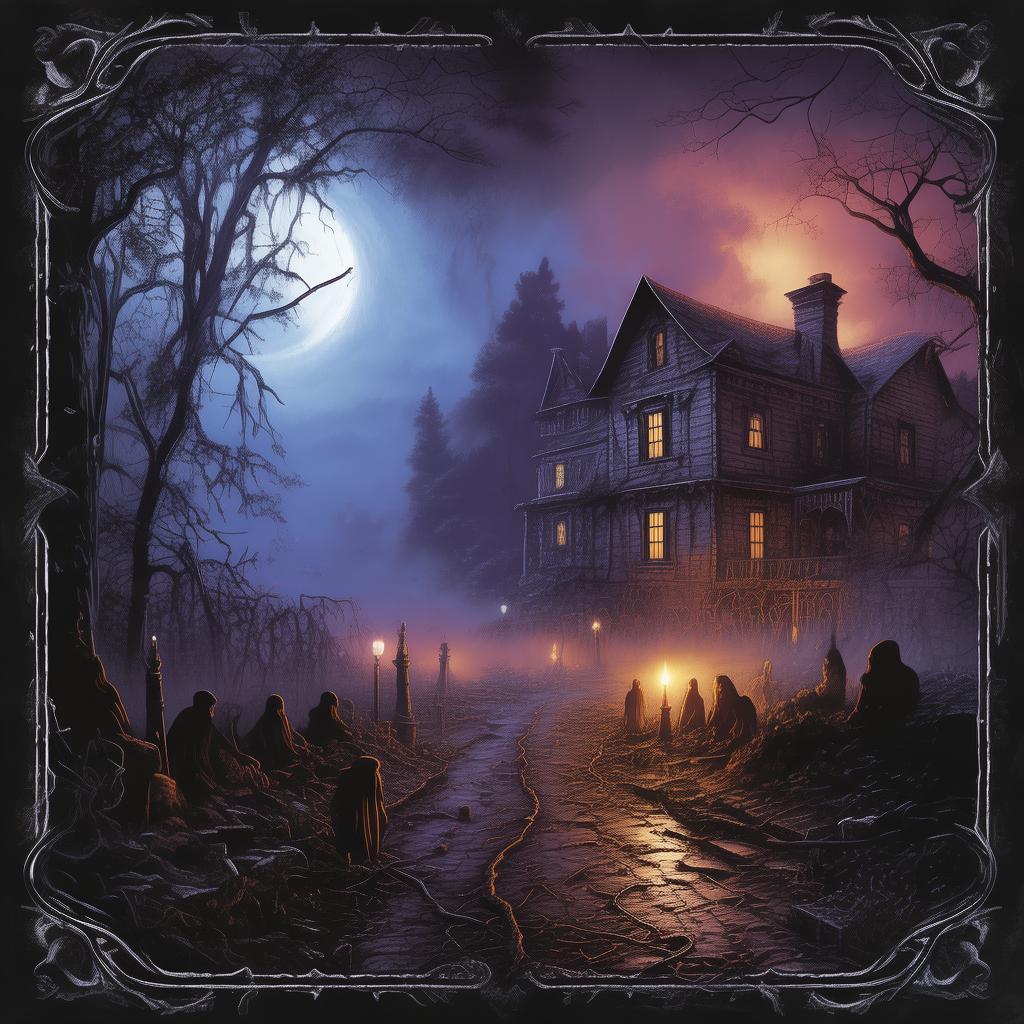Whispers in the Digital Shadows
In the heart of the bustling metropolis, where the neon lights never sleep and the streets are alive with the echoes of city life, there was a whisper that spread like wildfire. It wasn't the kind of whisper that carried through the wind, but the kind that traveled through the digital veins of the internet, pulsing with the excitement of the unknown.
The story was called "Ghost Story 33," and it began with a chilling premise: a young programmer, Alex, was found dead in his apartment, surrounded by screens displaying a single, haunting message. The message was the same on each screen: "I am everywhere."

The story quickly went viral, captivating the attention of thousands. It was a modern-day urban legend, a digital ghost story that played on the fears of the internet age. But as the story gained traction, so did the questions. Who was the ghost? Why had Alex been targeted? And more importantly, was there a truth behind the message that went beyond the mere supernatural?
The creator of "Ghost Story 33," known only by the handle "The Cryptic Narrator," was a master of suspense. They knew the power of the internet and wielded it with the precision of a sculptor. The story was meticulously crafted to evoke emotions, to make readers question what was real and what was not. Yet, as the narrative unfolded, it revealed a darker side of the digital world—a world where the boundaries between fiction and reality were blurred, and the lines between entertainment and exploitation were thin.
As the story gained traction, so did the legal inquiries. Alex's family, shattered by the loss, demanded answers. Law enforcement was baffled by the case; the only evidence was a digital footprint that seemed to lead nowhere. The Cryptic Narrator, however, remained silent, their identity a mystery wrapped in layers of digital encryption.
Enter Detective Sarah Jordan, a seasoned detective with a knack for solving the unsolvable. She was drawn to the case by the peculiarities surrounding Alex's death and the viral nature of the story. Her investigation led her down a rabbit hole of online forums, dark web corners, and encrypted messages. The more she delved, the more she realized that "Ghost Story 33" was not just a ghost story—it was a puzzle, one that required her to navigate the treacherous waters of online ethics and the legal implications of digital storytelling.
Sarah's journey took her from the dimly lit apartments of Alex's neighbors to the high-tech security rooms of internet service providers. She interviewed friends and colleagues who had known Alex, each one providing a piece of the puzzle that seemed to contradict the narrative of the story. Sarah found herself questioning the ethics of the Cryptic Narrator, who seemed to revel in the chaos they had created.
As Sarah pieced together the story, she discovered that Alex had been working on a revolutionary piece of software designed to protect users' privacy online. The software was meant to be a beacon of hope in an increasingly invasive digital world, but it had been intercepted by a rogue element that sought to exploit it for their own gain.
The Cryptic Narrator, it turned out, was not just a storyteller but a vigilante with a mission to expose the dark underbelly of the internet. Their true identity was a secret they guarded fiercely, believing that the end justified the means. However, their actions had unintended consequences, and the story of "Ghost Story 33" had spiraled out of control, ensnaring the lives of countless people.
Sarah faced a moral dilemma: Should she expose the Cryptic Narrator and risk the safety of the software and its potential to protect the public, or should she keep the identity hidden to ensure the software's success? The answer lay in the delicate balance between justice and the greater good.
In the climax of the story, Sarah confronts the Cryptic Narrator in a shadowy digital realm. The two engage in a tense dialogue that delves into the ethical implications of their actions. The Cryptic Narrator pleads their case, arguing that the ends justified the means, while Sarah counters with the potential damage their actions could cause.
The resolution of the story is bittersweet. Sarah decides to keep the identity of the Cryptic Narrator hidden, allowing the software to be released and potentially save countless users from the prying eyes of the digital world. However, she also ensures that the software is closely monitored to prevent future misuse.
The story of "Ghost Story 33" leaves a lasting impact on all who were touched by it. It raises questions about the ethical boundaries of online storytelling and the responsibilities that come with the power of the internet. The Cryptic Narrator, while successful in their mission, is left to reflect on the consequences of their actions, while Sarah Jordan grapples with the moral complexities of her own choices.
In the end, "Ghost Story 33" is not just a tale of a digital haunting; it is a reflection on the human condition and the moral quandaries that arise in a world where the boundaries between reality and fiction are increasingly blurred.
✨ Original Statement ✨
All articles published on this website (including but not limited to text, images, videos, and other content) are original or authorized for reposting and are protected by relevant laws. Without the explicit written permission of this website, no individual or organization may copy, modify, repost, or use the content for commercial purposes.
If you need to quote or cooperate, please contact this site for authorization. We reserve the right to pursue legal responsibility for any unauthorized use.
Hereby declared.









